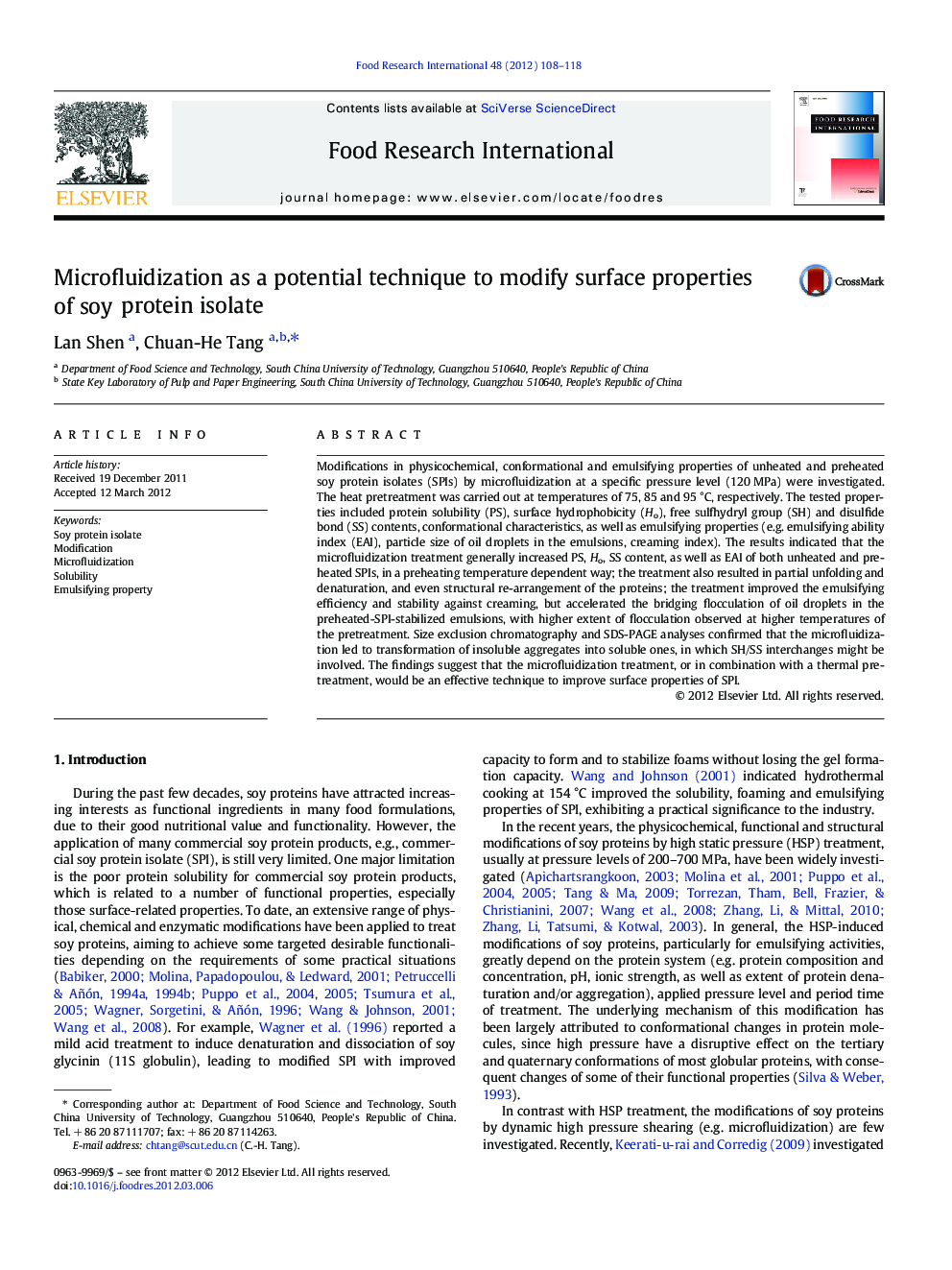| کد مقاله | کد نشریه | سال انتشار | مقاله انگلیسی | نسخه تمام متن |
|---|---|---|---|---|
| 6399250 | 1330690 | 2012 | 11 صفحه PDF | دانلود رایگان |

Modifications in physicochemical, conformational and emulsifying properties of unheated and preheated soy protein isolates (SPIs) by microfluidization at a specific pressure level (120 MPa) were investigated. The heat pretreatment was carried out at temperatures of 75, 85 and 95 °C, respectively. The tested properties included protein solubility (PS), surface hydrophobicity (Ho), free sulfhydryl group (SH) and disulfide bond (SS) contents, conformational characteristics, as well as emulsifying properties (e.g. emulsifying ability index (EAI), particle size of oil droplets in the emulsions, creaming index). The results indicated that the microfluidization treatment generally increased PS, Ho, SS content, as well as EAI of both unheated and preheated SPIs, in a preheating temperature dependent way; the treatment also resulted in partial unfolding and denaturation, and even structural re-arrangement of the proteins; the treatment improved the emulsifying efficiency and stability against creaming, but accelerated the bridging flocculation of oil droplets in the preheated-SPI-stabilized emulsions, with higher extent of flocculation observed at higher temperatures of the pretreatment. Size exclusion chromatography and SDS-PAGE analyses confirmed that the microfluidization led to transformation of insoluble aggregates into soluble ones, in which SH/SS interchanges might be involved. The findings suggest that the microfluidization treatment, or in combination with a thermal pretreatment, would be an effective technique to improve surface properties of SPI.
⺠The microfluidization effectively improved solubility and surface hydrophobicity. ⺠The microfluidization resulted in protein unfolding and denaturation. ⺠The microfluidization favored new disulfide bond formation. ⺠The microfluidization accelerated the flocculation of the oil droplets, but slightly improved the creaming stability. ⺠The modifications were largely associated with disintegration and conformational rearrangement of protein aggregates.
Journal: Food Research International - Volume 48, Issue 1, August 2012, Pages 108-118